
Audemars Piguet Royal Oak Chronograph Design
Aside from slight differences to the shape of the hour markers and hands, as well as the dimensions of the case, there is little from a core design perspective that this modern Royal Oak Chronograph does differently than the original Audemars Piguet Royal Oak design. The dial has Audemars Piguet’s “mega (grande) Tapisserie” repeating block face design as well as slightly more faceted versions of Genta’s original “sausage on a stick” hand and matching baton hour marker design.
A date window is located between 4 and 5 o’clock on the dial, and the chronograph sub-dials do a good job of not interfering much with legibility. Note that Audemars Piguet has produced many versions of the Royal Oak Chronograph. Some have mono-color dials such as this version, and others have contrast-colored sub-dials which offer a different visual aesthetic which many people like.
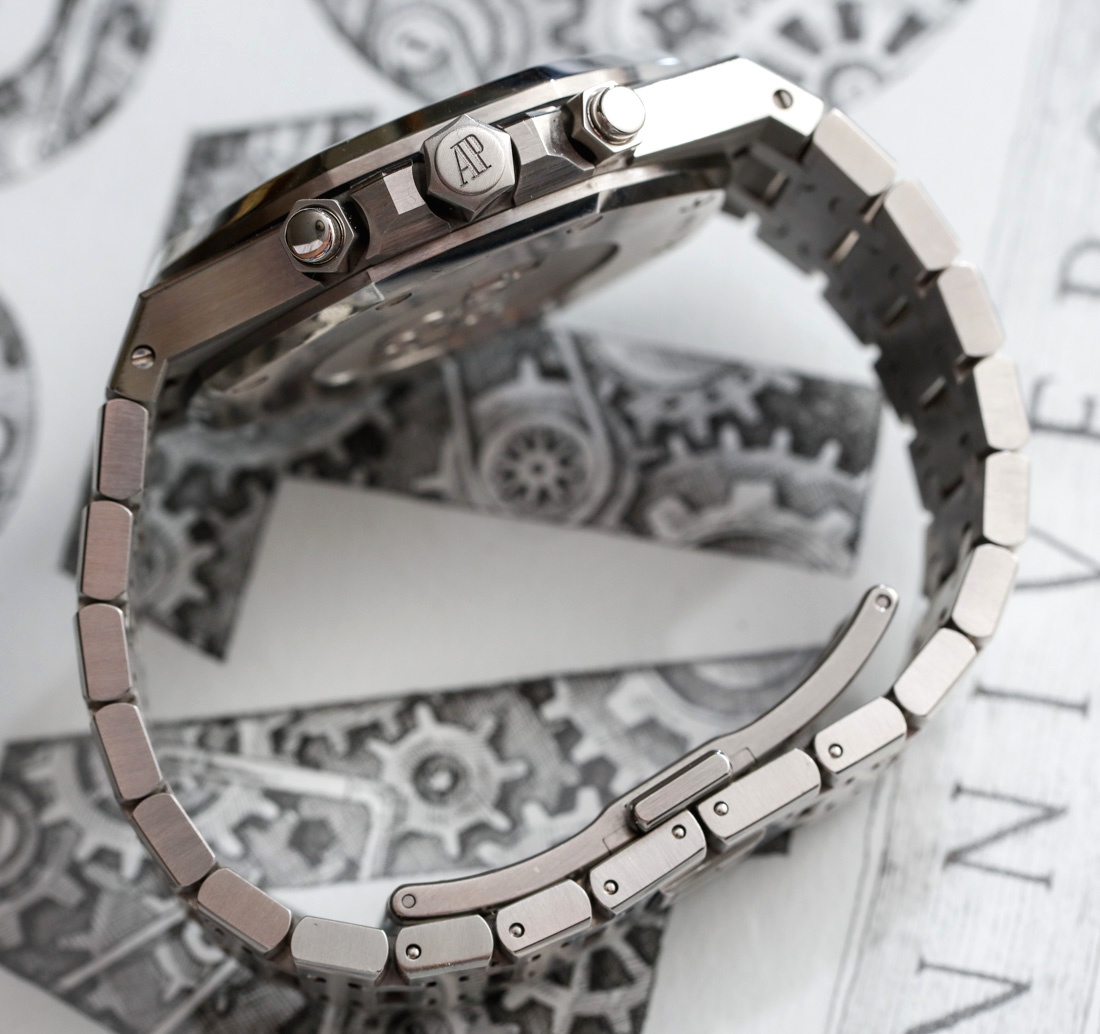
The chronograph pushers are screw-down in traditional fashion. This is designed to assist with water and dust resistance, but does make it a bit annoying to use the chronograph. Audemars Piguet Chronograph owners I’ve polled almost universally report that they chose the chronograph version of the Royal Oak for design reasons and rarely ever use the chronograph. Again, Audemars Piguet knows its clients and focuses on what matters most to them. That means a bit of effort to modernize the movement or chronograph complication would likely be more pleasing to people who aren’t the collection’s core customers.
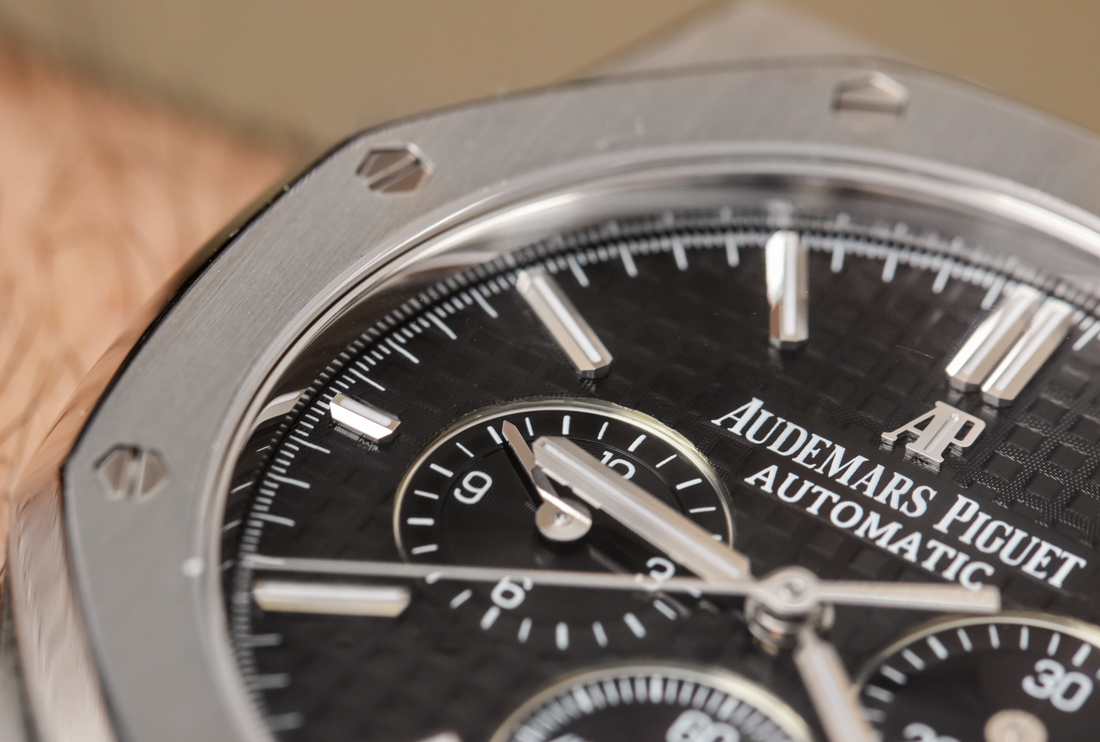
Earlier I remarked that the Royal Oak was men’s jewelry. I didn’t just say this because of how it is used by most of its owners, but also because of how it is made. Rather than a simple round, polished case, the Royal Oak has a number of small pieces which each need a lot of time being polished and finished by hand. The way the case is made is more akin to the world of jewelry than traditional watchmaking.
In fact, the Audemars Piguet Royal Oak itself was developed by Audemars Piguet by request of its agents in Italy who more or less wanted them to make a masculine time-telling men’s jewelry bracelet. Once again Italian watch tastes were ahead of their time, and the concept turned out to be a serious winner for the brand. That is, once the world had finally learned about the Royal Oak in the context of other competitive products.

Audemars Piguet Royal Oak Chronograph Wearing Experience
No doubt part of the appeal of the Audemars Piguet Royal Oak is in its comfortable and eye-pleasing wearing experience. The watch sits on the wrist securely thanks to its wide flat back and easy to articulate bracelet. The bracelet itself is a thing of beauty which has been produced in a series of ways over the years. My understanding is that more recently Audemars Piguet has combined hand and machine-finishing for the bracelet parts, whereas in the past it was mostly done by hand.
The newer Royal Oaks are a bit more “industrial” in their finishing than some of the older models, but the aesthetic is still very attractive. The core idea of the decoration is to combine the masculine look of brushed surfaces with as much light-catching polish in the form of mirror-polished bevels and angles. Gerald Genta knew implicitly that the allure of any jewelry item is in how its surfaces dance and play with the light – something the Royal Oak has always done nicely.
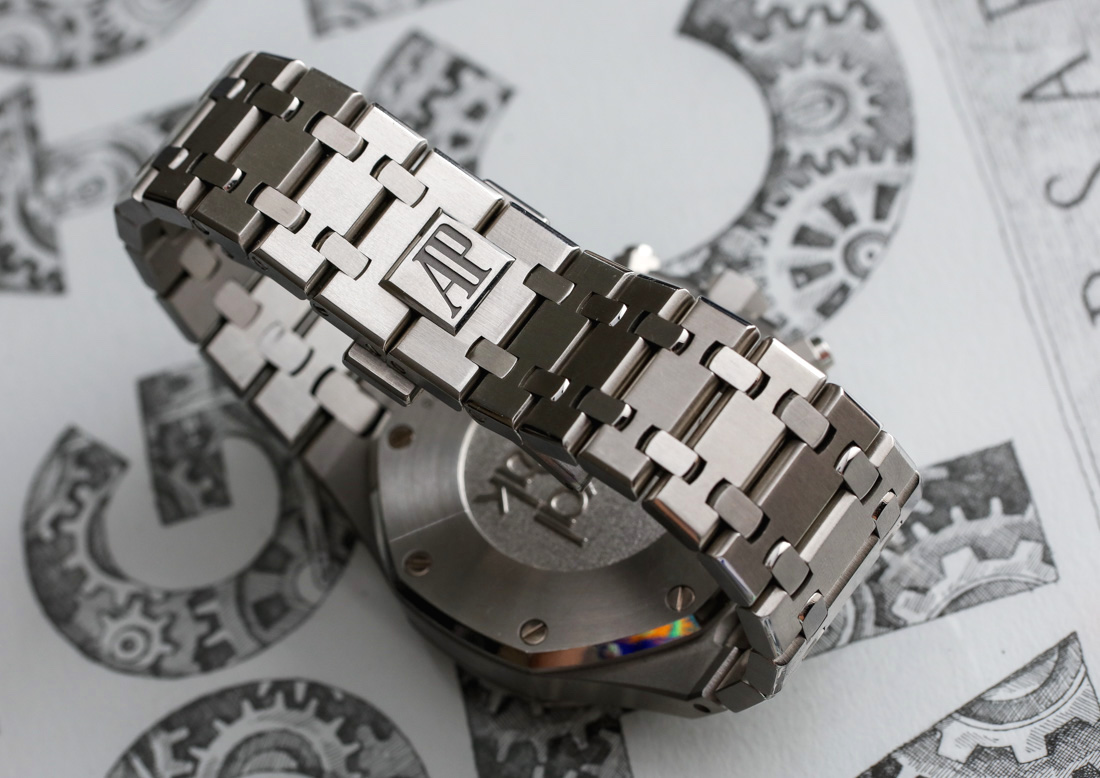
It’s All In the Details
Little details help explain the Audemars Piguet Royal Oak’s wearing comfort. For example, when you size the bracelet you’ll see that the holes for the screw bars are larger than they need to be. This helps give the bracelet “play,” which makes it more comfortable on more wrist sizes and shapes. The butterfly-style deployant clasp is entirely simple, but produced from high quality pieces of machined metal. If anything, the amount of nicely machined and finished metal pieces help give the Royal Oak a satisfying, substantial feel when held.
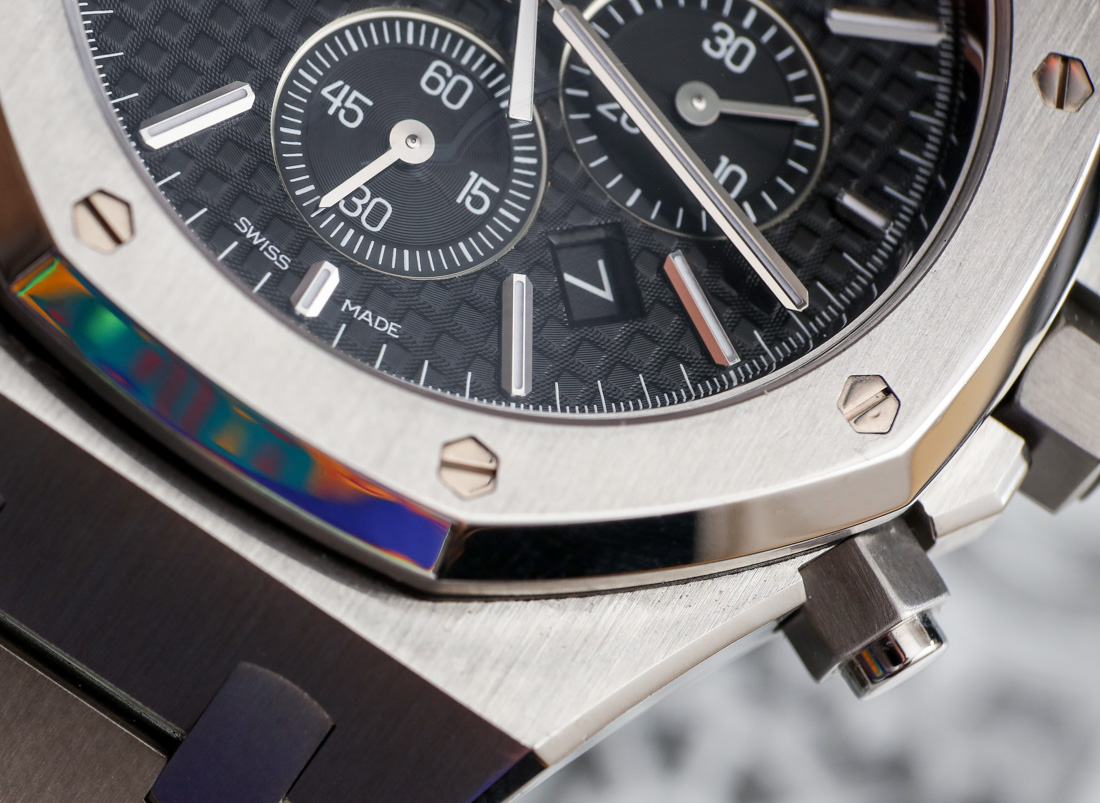
One of the most interesting areas of discussion from a design perspective when it comes to the Audemars Piguet Royal Oak is in how the octagonal bezel’s hexagonal screws have their “heads” all oriented in the right direction. Other brands have come under fire from some watch collectors who lament the fact that screw heads don’t always line up in an aesthetically pleasing, symmetrical manner. The way in which Audemars Piguet achieves this visual trick is with screw heads that aren’t really screws, but countersunk bolts with a hidden nut underneath.
In this sense all Audemars Piguet needs to do is insert the bolts so that the screw-style head is oriented in the correct direction, while the nut fastener on the bottom side is what keeps the bezel in place. Turn the case of the Audemars Piguet Royal Oak over and you’ll see actual screws used to secure the caseback, whose screw heads follow a more “organic” orientation.
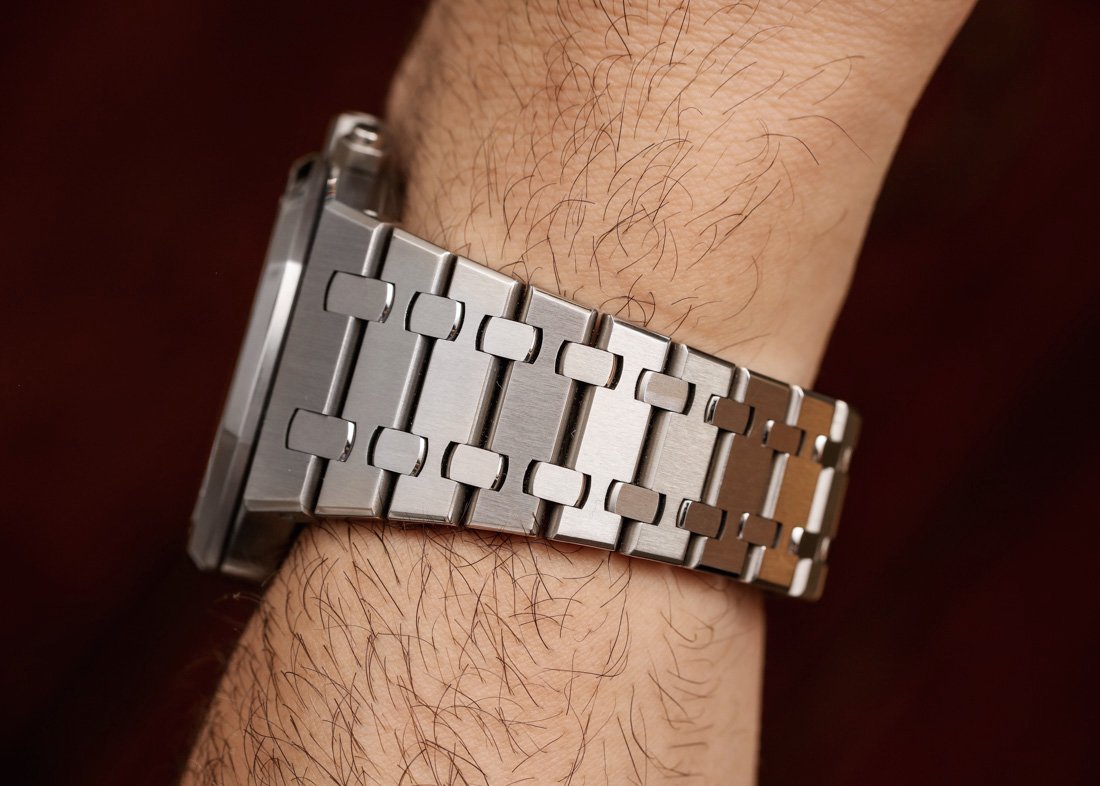
Final Thoughts
As a piece of men’s luxury jewelry that just happens to tell the time, the Audemars Piguet Royal Oak is among the best options out there. In a true “luxury maison” sense you are buying a piece of Audemars Piguet to wear on your wrist – and all the personality and history that comes with it. That is as opposed to a less recognizable watch design whose personality is dependent on the wearer. This goes back to the larger discussion I like to have from time to time of whether “you wear a watch or if a watch is wearing you.” The latter is more true for the Audemars Piguet Royal Oak in my opinion – and there is nothing wrong with that assuming you admire and appreciate the personality which Audemars Piguet has created for its extremely important Royal Oak product.
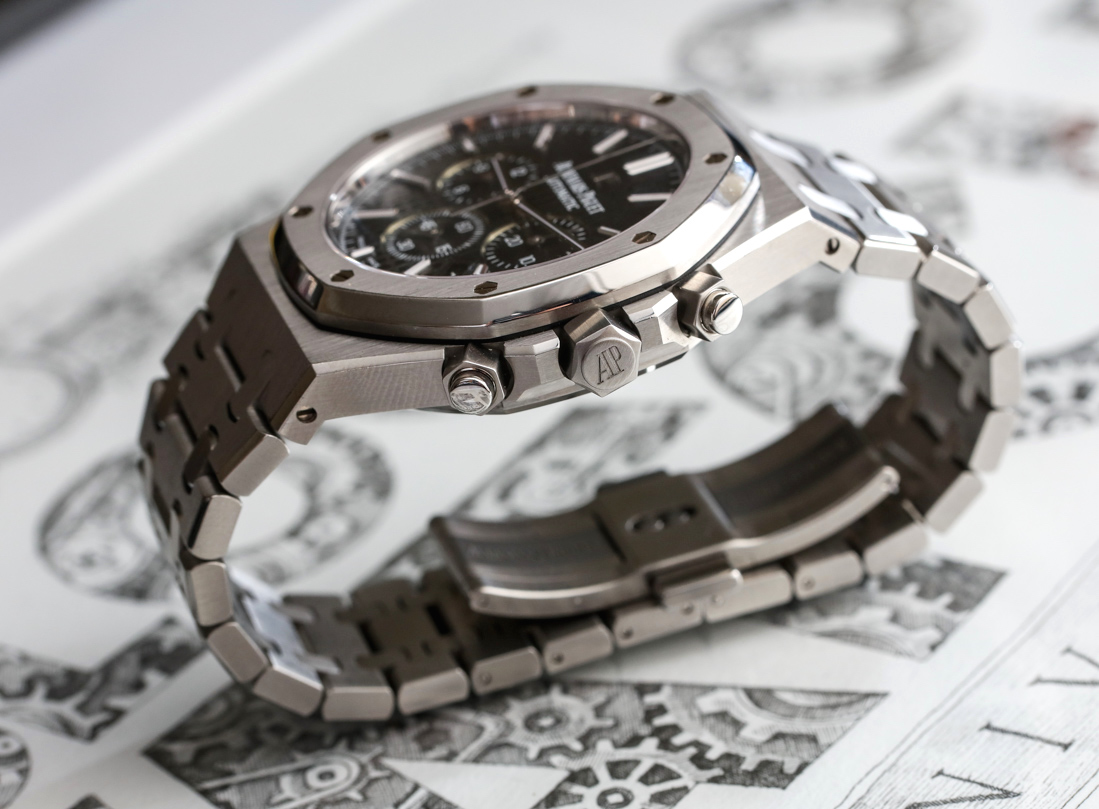
I’m not in a particular rush to own an Audemars Piguet Royal Oak because as a watch collector I know the collection isn’t going anywhere anytime soon. That tends to happen with design icons like the Royal Oak, in that many people want one but they wait for the “right time” to acquire one. Audemars Piguet certainly has no shortage of options and with new Royal Oaks coming out each year, consumers have no reason to rush unless that “perfect” model is released.
For me I prefer the three-hand version of the Royal Oak because I feel it more authentically captures the “vibe” Gerald Genta intended and I feel like a chronograph isn’t a necessary complication for this watch. Having said that, there is an undeniable attraction of adding the visual sporty complexity of a chronograph to such a design icon that Audemars Piguet does rather well. Price for this reference 26320ST.OO.1220ST.03 version of the Audemars Piguet Royal Oak Chronograph 41mm is $24,300 USD. For more information, check out their website at audemarspiguet.com.
Necessary Data
>Brand: Audemars Piguet
>Model: Royal Oak Chronograph 41mm (reference 26320ST.OO.1220ST.03 as tested)
>Price: $24,300 USD
>Size: 41mm wide, 11mm thick, 53mm lug-to-lug distance
>When reviewer would personally wear it: When wanting to make a positive impression on a luxury-status audience as well as generally making all watch lovers nod in acceptable of your wristwatch choice. Not a risky option, but a safe and timeless one.
>Friend we’d recommend it to first: Those with smaller collections of mostly high-end watches looking for design icons that will fit their lifestyle well for years to come. The 41mm wide chronograph version is best for larger wrists and those who like the added visual complexity of a chronograph.
>Best characteristics of watch: Genuinely classic design works well because it is a very wearable jewelry bracelet in addition to being a timepiece. Masculine, sporty, and very Euro-style aesthetic has been the most important part of the watch’s appeal.
>Worst characteristics of watch: Movement inside the watch is attractive but not interesting from a technical standpoint. The chronograph version isn’t meant for all watch lovers but thankfully Audemars Piguet has plenty of Royal Oak models to choose from.

